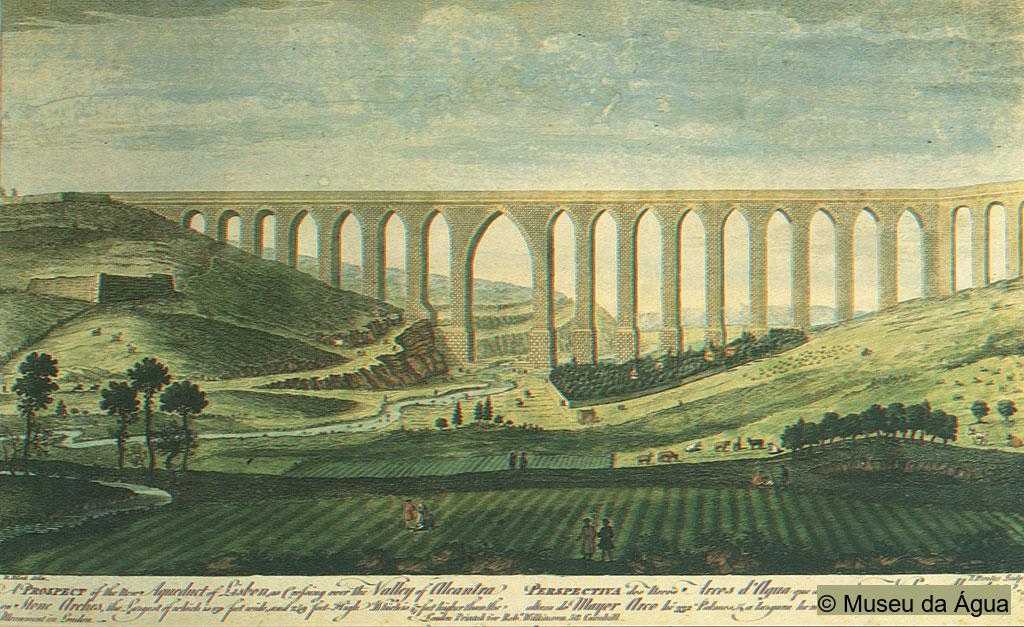Discovering Lisbon’s Underground Aqueduct
Lisbon, the vibrant capital of Portugal, is known for its rich history, stunning architecture, and lively culture. However, beneath its bustling streets lies a hidden marvel that many visitors overlook: the underground aqueduct system. This engineering feat, known as the Águas Livres Aqueduct, is a testament to the ingenuity of past civilizations and offers a unique glimpse into the city’s history and development.
The History and Purpose of the Aqueduct
The Águas Livres Aqueduct was constructed in the 18th century to address Lisbon’s growing need for a reliable water supply. At the time, the city was expanding rapidly, and its existing water sources were insufficient to meet the demands of its population. King John V commissioned the aqueduct in 1731, and it was completed in 1799. The aqueduct spans approximately 58 kilometers, with its most iconic section being the 14-kilometer stretch that crosses the Alcântara Valley.
The aqueduct was designed to transport water from the Sintra Mountains to Lisbon, utilizing gravity to ensure a steady flow. Its construction involved a series of tunnels, channels, and bridges, with the most famous being the 65-meter-high arches that cross the Alcântara Valley. This section, known as the “Águas Livres,” is a remarkable example of Baroque engineering and architecture.
Exploring the Aqueduct Today
Today, visitors can explore parts of the Águas Livres Aqueduct, gaining insight into its historical significance and architectural brilliance. The most accessible section is the Mãe d’Água das Amoreiras Reservoir, located in the Amoreiras district. This reservoir served as the aqueduct’s main distribution point and is now a museum open to the public.
Inside the Mãe d’Água, visitors can admire the grand vaulted ceilings and the impressive water storage tank, which once held up to 5,500 cubic meters of water. The museum also offers guided tours that delve into the history and construction of the aqueduct, providing a deeper understanding of its role in Lisbon’s development.
For those seeking a more adventurous experience, the aqueduct’s underground tunnels can be explored through guided tours. These tours take visitors through the dark, narrow passages that once carried water to the city, offering a unique perspective on this engineering marvel. It’s a fascinating journey that highlights the challenges faced by the engineers and workers who built this incredible structure.
Practical Tips for Visiting
If you’re planning to explore Lisbon’s underground aqueduct, here are some practical tips to ensure a smooth and enjoyable visit:
- Check Opening Hours: The Mãe d’Água das Amoreiras Reservoir and the aqueduct tours have specific opening hours, so it’s essential to check in advance. The museum is typically open from Tuesday to Sunday, but hours may vary.
- Book a Guided Tour: To fully appreciate the aqueduct’s history and architecture, consider booking a guided tour. These tours provide valuable insights and allow you to explore areas that are not accessible to the general public.
- Wear Comfortable Shoes: Exploring the aqueduct involves walking through tunnels and uneven surfaces, so comfortable footwear is a must. Be prepared for some stairs and narrow passages.
- Bring a Light Jacket: The underground tunnels can be cool and damp, even during the warmer months. A light jacket or sweater will help keep you comfortable during your visit.
- Respect the Site: The aqueduct is a historical monument, so it’s important to treat it with respect. Follow any guidelines provided by your tour guide and avoid touching or damaging the structure.
Exploring Lisbon’s underground aqueduct is a unique experience that offers a glimpse into the city’s past and the remarkable engineering achievements of its time. Whether you’re a history enthusiast or simply looking for an off-the-beaten-path adventure, the aqueduct is a must-see attraction that showcases the ingenuity and resilience of Lisbon’s ancestors.
